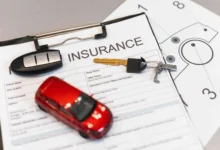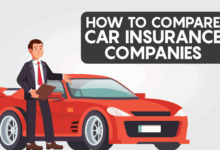Car Insurance Michigan: A Comprehensive Guide
Car Insurance Michigan presents a unique landscape of regulations and options for drivers. Understanding Michigan’s no-fault system, mandatory coverage requirements, and the factors influencing premium costs is crucial for securing affordable and appropriate car insurance. This guide navigates the complexities, providing insights into choosing the right coverage, filing claims effectively, and finding the best rates.
From comparing different insurance providers and exploring the benefits of bundling policies to understanding the nuances of uninsured/underinsured motorist coverage, we aim to empower Michigan drivers with the knowledge needed to make informed decisions about their car insurance. We’ll also delve into strategies for negotiating lower premiums and handling disputes with insurance companies.
Understanding Michigan’s Car Insurance Laws
Michigan has a unique and often complex system of no-fault auto insurance. Understanding the requirements and available options is crucial for all drivers in the state to ensure they have adequate protection. This section will outline the mandatory coverages, different insurance types, and compare their benefits and drawbacks.
Mandatory Coverage Requirements in Michigan
Michigan law mandates that all drivers carry Personal Injury Protection (PIP) coverage. This means that regardless of who is at fault in an accident, your own insurance will cover your medical bills and lost wages. In addition to PIP, uninsured/underinsured motorist coverage is also required. This protects you if you’re involved in an accident with a driver who doesn’t have insurance or doesn’t have enough coverage to cover your damages. The minimum amounts for these coverages can change, so it’s important to check the current state regulations.
Types of Car Insurance Available in Michigan
Michigan offers several types of car insurance coverage, each designed to address different aspects of potential accidents and damages. The most common are Personal Injury Protection (PIP), Property Damage Liability (PDL), Uninsured/Underinsured Motorist (UM/UIM) coverage, and Collision and Comprehensive coverage.
Personal Injury Protection (PIP)
PIP coverage pays for your medical expenses, lost wages, and other related expenses, regardless of fault. It’s a cornerstone of Michigan’s no-fault system. A significant drawback can be the high cost of PIP coverage in Michigan, particularly if you choose higher limits. However, the benefit is the assurance of coverage for your own injuries, regardless of who caused the accident.
Property Damage Liability (PDL)
PDL coverage pays for damages to other people’s property if you cause an accident. This includes repairing or replacing the other driver’s vehicle, as well as any other property damage you are responsible for. The minimum required coverage for PDL is relatively low, so purchasing higher limits is advisable to protect yourself from significant financial liability in the event of a serious accident.
Uninsured/Underinsured Motorist (UM/UIM) Coverage
UM/UIM coverage protects you if you’re involved in an accident with an uninsured or underinsured driver. This is particularly important given the prevalence of uninsured drivers in some areas. The UM/UIM coverage will help pay for your medical bills and other expenses, even if the other driver is at fault and lacks sufficient insurance.
Collision and Comprehensive Coverage
Collision coverage pays for damage to your vehicle caused by an accident, regardless of fault. Comprehensive coverage protects your vehicle against damage from events other than collisions, such as theft, vandalism, or weather-related damage. These are optional coverages, but they provide significant financial protection against unexpected events. While optional, they offer peace of mind.
Comparison of Car Insurance Coverage Options
The following table summarizes the key features of different car insurance coverage options available in Michigan:
| Coverage Type | What it Covers | Mandatory in Michigan? | Benefits | Drawbacks |
|---|---|---|---|---|
| PIP (Personal Injury Protection) | Medical bills, lost wages, etc., regardless of fault. | Yes | Guaranteed coverage for your injuries. | Can be expensive; limits may not cover all expenses. |
| PDL (Property Damage Liability) | Damage to other people’s property. | Yes | Protects you from liability for damage you cause. | Minimum coverage may be insufficient. |
| UM/UIM (Uninsured/Underinsured Motorist) | Injuries and damages caused by uninsured/underinsured drivers. | Yes | Protection against accidents involving uninsured drivers. | Additional cost, but essential protection. |
| Collision | Damage to your vehicle in an accident, regardless of fault. | No | Covers repairs to your vehicle. | Additional cost; deductible applies. |
| Comprehensive | Damage to your vehicle from non-collision events (theft, vandalism, weather). | No | Broad protection against various risks. | Additional cost; deductible applies. |
Factors Affecting Car Insurance Premiums in Michigan
Several key factors influence the cost of car insurance in Michigan. Insurance companies use a complex algorithm to assess risk, and this assessment directly impacts the premiums you pay. Understanding these factors can help you make informed decisions about your coverage and potentially lower your costs.
Driving History
Your driving record significantly impacts your insurance premium. A clean driving history, free of accidents and traffic violations, will generally result in lower premiums. Conversely, accidents and tickets, particularly serious ones like DUIs or reckless driving, can dramatically increase your rates. The severity of the incident, the number of incidents, and how recently they occurred all play a role. For example, a single minor fender bender might result in a modest premium increase, while a DUI conviction could lead to significantly higher premiums, or even policy cancellation in some cases. Insurance companies view these incidents as indicators of higher risk, and therefore charge accordingly.
Age and Gender
Statistically, age and gender correlate with accident risk. Younger drivers, particularly those under 25, generally pay higher premiums due to their higher accident rates. This is because younger drivers have less experience behind the wheel and are more likely to be involved in accidents. Similarly, gender can also be a factor, though this is less significant than age. Historically, certain gender demographics have shown higher accident rates, leading to potentially higher premiums. However, it’s important to note that this is a statistical trend and doesn’t reflect on individual drivers.
Location
Where you live significantly affects your insurance rates. Insurance companies consider the crime rate, accident frequency, and the cost of repairs in your area. Areas with high crime rates or frequent accidents will typically have higher insurance premiums due to the increased risk of theft, damage, or injury claims. For example, a driver residing in a densely populated urban area with high traffic volume might pay more than a driver in a rural area with lower traffic density and fewer reported incidents.
Vehicle Type
The type of vehicle you drive also influences your insurance premiums. Generally, sports cars and luxury vehicles are more expensive to insure than economy cars. This is because these vehicles are often more expensive to repair and replace, and they are sometimes associated with higher speeds and riskier driving behaviors. For example, insuring a high-performance sports car will typically cost considerably more than insuring a fuel-efficient compact car, reflecting the higher repair costs and potential for greater damage in an accident. Features like safety technology (anti-lock brakes, airbags) can also influence premiums, often resulting in lower costs for vehicles equipped with advanced safety features.
Finding Affordable Car Insurance in Michigan
Securing affordable car insurance in Michigan requires a proactive approach. The state’s unique no-fault system and competitive insurance market offer opportunities to find policies that fit your budget, but careful comparison and negotiation are key. This section outlines strategies to help you find the best value for your car insurance needs.
Comparing Car Insurance Quotes
Effectively comparing car insurance quotes involves more than just looking at the bottom line price. Consider the coverage levels offered, deductibles, and the reputation of the insurance company. Request quotes from multiple providers, ensuring you are comparing apples to apples – meaning the same coverage levels across all quotes. Don’t hesitate to ask questions about policy details to ensure complete understanding before making a decision. A simple spreadsheet can help you organize and compare the various quotes you receive, highlighting key differences and helping you make an informed decision.
Obtaining Car Insurance Quotes Online
Obtaining car insurance quotes online is a streamlined process. Begin by visiting the websites of several major insurance providers operating in Michigan. You’ll typically need to provide basic information about yourself, your vehicle, and your driving history. Be accurate and thorough in completing the online forms; inaccuracies can lead to inaccurate quotes or policy issues later. Most online quote tools provide instant results, allowing for quick comparisons. Remember to review the details of each quote carefully before proceeding. After receiving multiple quotes, you can then compare and contrast to identify the best value for your needs.
Bundling Car Insurance with Other Insurance Types
Bundling car insurance with other types of insurance, such as homeowners or renters insurance, is a common strategy for potential savings. Many insurance companies offer discounts for bundling policies. The discount amount varies depending on the insurer and the specific policies bundled. However, it’s crucial to compare the bundled price against the individual costs of each policy to ensure the bundle truly offers a better overall value. For instance, if the bundled price is only slightly lower than purchasing the policies separately, the savings might not be significant enough to justify the bundle.
Negotiating Lower Insurance Premiums
Negotiating lower insurance premiums is possible, although it requires some effort. Start by reviewing your driving record and credit report for any errors that could be impacting your premiums. Correcting these errors can lead to immediate savings. Consider increasing your deductible; a higher deductible typically translates to lower premiums, but be sure you can comfortably afford the increased out-of-pocket expense in case of an accident. Maintain a good driving record; this is a major factor influencing your premiums. Finally, inquire about any available discounts, such as those for good students, safe drivers, or those who install anti-theft devices. Don’t be afraid to politely negotiate with your insurer, explaining your situation and highlighting your commitment to safe driving.
Michigan’s No-Fault System
Michigan operates under a no-fault auto insurance system, meaning that regardless of fault in an accident, your own insurance company covers your medical bills and lost wages. This differs significantly from many other states where fault is determined to establish liability. Understanding how this system works is crucial for every Michigan driver.
How Michigan’s No-Fault System Works After an Accident
In a Michigan car accident, regardless of who caused the crash, your Personal Injury Protection (PIP) coverage will pay for your medical expenses, rehabilitation costs, and lost wages. Your PIP coverage also covers passengers in your vehicle. However, you can only sue the at-fault driver for non-economic damages (pain and suffering, etc.) if your injuries meet a specific threshold, typically involving significant injury or death. This threshold prevents minor accident claims from clogging the courts. The at-fault driver’s insurance company will typically handle property damage claims, regardless of who was at fault for the accident.
Filing a No-Fault Claim
The process of filing a no-fault claim begins by promptly notifying your insurance company of the accident. This notification should include details such as the date, time, location, and circumstances of the accident, as well as the names and contact information of all parties involved. You will then need to submit the necessary documentation, including medical bills, lost wage statements, and police reports. Your insurance company will review your claim and determine the extent of coverage based on your policy. Disputes can arise, and in such cases, mediation or arbitration may be necessary. It is advisable to keep meticulous records of all communication and documentation related to your claim.
Comparison with Other States’ Systems
Michigan’s no-fault system is unique in its structure and differs substantially from systems in other states. Many states operate under a “tort” system, where fault is determined, and the at-fault driver’s insurance is responsible for covering the injured party’s damages. Some states offer a choice between no-fault and tort options, while others utilize a modified no-fault system with less restrictive thresholds for suing the at-fault driver. Compared to these, Michigan’s system offers broader coverage for medical expenses and lost wages but limits the ability to sue for pain and suffering unless a serious injury threshold is met. The extent of coverage and the ability to pursue legal action against the at-fault driver vary considerably across states.
No-Fault Claim Process Flowchart
The steps involved in a no-fault claim can be summarized as follows:
- Report the Accident: Immediately notify your insurance company of the accident, providing all relevant details.
- Seek Medical Attention: Obtain necessary medical care for your injuries.
- Gather Documentation: Collect medical bills, lost wage statements, police reports, and any other relevant documentation.
- File a Claim: Submit your claim to your insurance company along with the supporting documentation.
- Insurance Company Review: Your insurance company reviews your claim and determines coverage.
- Payment of Benefits: Your insurance company pays for eligible medical expenses, lost wages, and other covered losses.
- Dispute Resolution (if necessary): If a dispute arises, consider mediation or arbitration.
Dealing with Car Insurance Claims in Michigan
Navigating the car insurance claims process in Michigan can feel overwhelming after a car accident. Understanding the steps involved and your rights as a policyholder is crucial for a smooth and successful resolution. This section outlines the process, from initial reporting to handling potential disputes.
Reporting a car accident to your insurance company promptly is the first critical step. Michigan law requires reporting accidents involving injuries or property damage exceeding $1,000. The sooner you report, the sooner the claims process can begin.
Reporting a Car Accident
Immediately after an accident, ensure the safety of yourself and others involved. Call emergency services if needed. Then, contact your insurance company as soon as possible, typically within 24-48 hours. Provide them with the necessary details, including the date, time, and location of the accident, along with a description of the events. Obtain contact information from all parties involved, including witnesses. If possible, take photographs of the damage to all vehicles and the accident scene. Note that failure to promptly report an accident could jeopardize your claim.
Required Documents for Filing a Claim
Gathering the necessary documentation is vital for a swift and efficient claims process. Having these documents readily available will streamline the process and avoid delays.
- Police report (if applicable)
- Your insurance policy information
- Driver’s licenses and registration information for all involved parties
- Contact information for all witnesses
- Photographs of the accident scene and vehicle damage
- Medical records and bills (if applicable)
- Repair estimates (if applicable)
Communicating with Insurance Adjusters
Effective communication with your insurance adjuster is key to a successful claim. Maintain a professional and courteous demeanor throughout the process. Be accurate and thorough in your responses, providing all requested information promptly. Keep detailed records of all communication, including dates, times, and the content of conversations. It is advisable to obtain everything in writing to avoid misunderstandings.
Handling Disputes with Your Insurance Company
Disputes with insurance companies can arise. If you disagree with your insurer’s assessment of your claim, first review your policy carefully and understand your coverage. Attempt to resolve the issue through internal channels by escalating your concerns to a supervisor or manager. If internal dispute resolution fails, consider seeking assistance from a qualified attorney specializing in insurance claims. Michigan has specific laws regarding insurance practices, and an attorney can help navigate these complexities. In some cases, mediation or arbitration may be viable options before resorting to litigation.
Uninsured/Underinsured Motorist Coverage in Michigan
Driving in Michigan requires understanding the potential risks involved, including accidents with uninsured or underinsured drivers. This is where uninsured/underinsured motorist (UM/UIM) coverage becomes crucial. It acts as a safety net, protecting you and your passengers from significant financial burdens in the event of an accident caused by a driver who lacks sufficient insurance.
Uninsured/Underinsured Motorist Coverage in Michigan provides financial protection for injuries and damages resulting from an accident caused by an uninsured or underinsured driver. This coverage compensates you for medical expenses, lost wages, pain and suffering, and property damage, even if you’re not at fault. The amount of coverage is determined by your policy limits, which you select when purchasing your insurance. It’s important to note that UM/UIM coverage is separate from your collision and liability coverage.
Coverage Provided by UM/UIM Insurance
This coverage typically pays for medical bills, lost wages, and other expenses related to injuries sustained in an accident caused by an uninsured or underinsured driver. It also covers property damage to your vehicle. The specific benefits provided will depend on the terms of your individual policy and the state of Michigan’s no-fault laws. While Michigan is a no-fault state, UM/UIM coverage extends beyond the no-fault benefits in certain circumstances, particularly when the at-fault driver is uninsured or underinsured.
Scenarios Where UM/UIM Coverage is Beneficial
UM/UIM coverage is beneficial in numerous scenarios. For example, if you’re involved in an accident with a hit-and-run driver, or if you’re struck by an uninsured driver, this coverage will help cover your losses. Similarly, if the other driver is underinsured, and their liability coverage is insufficient to cover your damages, your UM/UIM coverage will bridge the gap. This is particularly important in cases involving significant medical expenses or extensive property damage.
Hypothetical Scenario Illustrating UM/UIM Coverage
Imagine you’re stopped at a red light when another car rear-ends you. The other driver is at fault, but they only carry the state-minimum liability insurance of $20,000. Your medical bills total $50,000, and your vehicle requires $10,000 in repairs. Your own liability coverage won’t cover your medical expenses or the full cost of vehicle repairs. However, because you have UM/UIM coverage with a $100,000 limit, your insurance company will pay the remaining $40,000 in medical bills and the full $10,000 for vehicle repairs, protecting you from substantial out-of-pocket costs.
Last Point
Securing the right car insurance in Michigan requires careful consideration of various factors. By understanding the state’s unique laws, comparing coverage options, and actively engaging in the process of finding the best rates, Michigan drivers can protect themselves financially and legally. Remember to always review your policy thoroughly and don’t hesitate to seek clarification from your insurance provider when needed. Driving safely contributes significantly to maintaining lower premiums.




